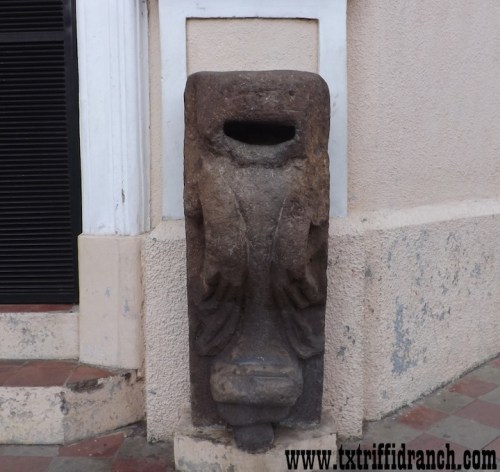
Contrary to popular opinion, the Triffid Ranch doesn’t focus solely on carnivorous plants. The last ten years have been a boot camp on care and propagation of two species of the Hylocereus climbing cactus known commonly as “dragonfruit.” Getting seeds for the two most common species, white (H. undatus) and red (H. costaricensis), was exceedingly easy as dragonfruit continue their rise in popularity in American markets. (An extra surprise for those wanting to buy carnivorous plant seeds: since dragonfruit seeds are almost identical to Venus flytrap seeds, scammers sell a lot of dragonfruit seeds all over Amazon and eBay.) Every reference I could find about the yellow dragonfruit cactus, H. megalanthus, though, noted that it was very hard to find outside of Central America, and a business trip to Nicaragua turned up other species growing under live oak trees but no fruit. By last New Year’s Eve, I’d given up on finding any, so guess what happened when my wife pointed out a new entry at our local Asian market?

Getting one home, several things presented themselves as I went to work with a knife. Firstly, these fruit were imported from Ecuador, suggesting either that Ecuadorean farmers are competing with the big red and white dragonfruit farms in Vietnam, or that there’s something about megalanthus propagation that makes growing them in the Americas much easier. Secondly, as compared to the firm and crunch flesh of other species, megalanthus fruit is just pulpy enough that they’re shipped in the same padded netting used for Asian pears to keep them from bruising during transport. Thirdly, while most Americans are disappointed by the very delicate flavor of red and white dragonfruit (that delicacy, incidentally, is why I love them and could eat them all day), megalanthus fruit has a very distinctive sweet flavor, much like the syrup in canned fruit cocktail. Get the word out to chefs and bartenders in the States and Europe, and Ecuador will have to quintuple dragonfruit production just to keep up with demand.

Oh, and the most interesting part besides the color of the peel? Yellow dragonfruit seeds are HUGE compared to those of other Hylocereus species. They’re still perfectly edible, and they add a very satisfying crunch when inhaling the fourth yellow dragonfruit of the night, but this suggests further research on which animals are used as vectors for those seeds: I’m putting down early money on lizards and tortoises as well as birds. On any case, most of the remaining fruit went into propagation, using techniques that are very productive for the other commercially grown Hylocereus species: tall pots under a propagation dome, with the fruit scraped out of the rind, spread out atop potting mix in thin strips, and more potting mix put on top to facilitate decay of the pulp. In about a month, we’ll learn if this worked: wish me luck.





















